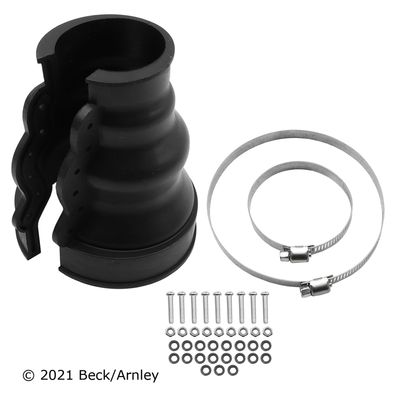Answer
Aug 21, 2024 - 03:58 PM
A CV (Constant Velocity) boot and a CV joint are distinct components within a vehicle's drivetrain, and they serve different purposes. Understanding the difference between the two is important, especially when considering repairs or replacements using GM Genuine Parts kits. Here’s how they differ:
1. CV Boot:- Function: The CV boot is a protective cover made of rubber or thermoplastic material that encases the CV joint. Its primary function is to keep the CV joint lubricated by holding grease inside and to protect the joint from dirt, water, and other contaminants.
- Location: The CV boot is located at each end of the CV axle, covering the CV joint where the axle connects to the transmission or wheel hub.
- Role in the System: The boot acts as a barrier that prevents contaminants from entering the CV joint and keeps the grease from leaking out. This is crucial for maintaining the longevity and proper functioning of the CV joint.
- Material: Typically made from durable rubber or thermoplastic materials, which are flexible enough to accommodate the movement of the joint while providing a tight seal.
- Function: The CV joint itself is a mechanical joint that allows the axle to transmit power to the wheels while accommodating the up-and-down motion of the suspension and the turning of the wheels. It enables smooth and constant power delivery to the wheels, even when they are turning or moving over uneven surfaces.
- Types: There are generally two types of CV joints:
- Outer CV Joint (Rzeppa Joint): Located at the wheel end of the axle, allowing the wheel to turn and move up and down.
- Inner CV Joint (Tripod Joint or Plunge Joint): Located at the transmission end of the axle, allowing for slight in-and-out movement as the suspension moves.
- Role in the System: The CV joint is critical for maintaining the drivability and stability of the vehicle, ensuring that power is transmitted smoothly regardless of the angle of the wheels or the movement of the suspension.
- Components: A CV joint typically consists of a cage, bearings, and an outer race that work together to allow smooth movement while transferring power.
- CV Boot Kit (e.g., GM Genuine Parts 19256071): This kit generally includes a new CV boot, clamps, and grease. It is designed to replace a damaged or worn boot, ensuring that the CV joint remains protected and lubricated.
- CV Joint Kit: A CV joint kit would include the actual CV joint, and may also come with a new boot, grease, and clamps. This kit is used when the CV joint itself is damaged or worn out and needs to be replaced.
- CV Boot Replacement: If the boot is torn or damaged, replacing just the boot with a kit like the GM Genuine Parts 19256071 can prevent damage to the CV joint. This is a more straightforward and less expensive repair.
- CV Joint Replacement: If the CV joint is already worn or damaged (often due to prolonged exposure to contaminants or lack of lubrication from a torn boot), the entire joint will need to be replaced. This is a more involved repair and typically more expensive than just replacing the boot.
- CV Boot: A protective cover that seals the CV joint, keeping grease in and contaminants out.
- CV Joint: The mechanical component that allows the axle to transmit power to the wheels while accommodating movement and steering.
The CV boot is crucial for the protection and longevity of the CV joint, while the CV joint itself is essential for the vehicle's power delivery and handling. If the CV boot is damaged, it should be replaced promptly to prevent damage to the CV joint, which would require a more extensive and costly repair.





Add New Comment